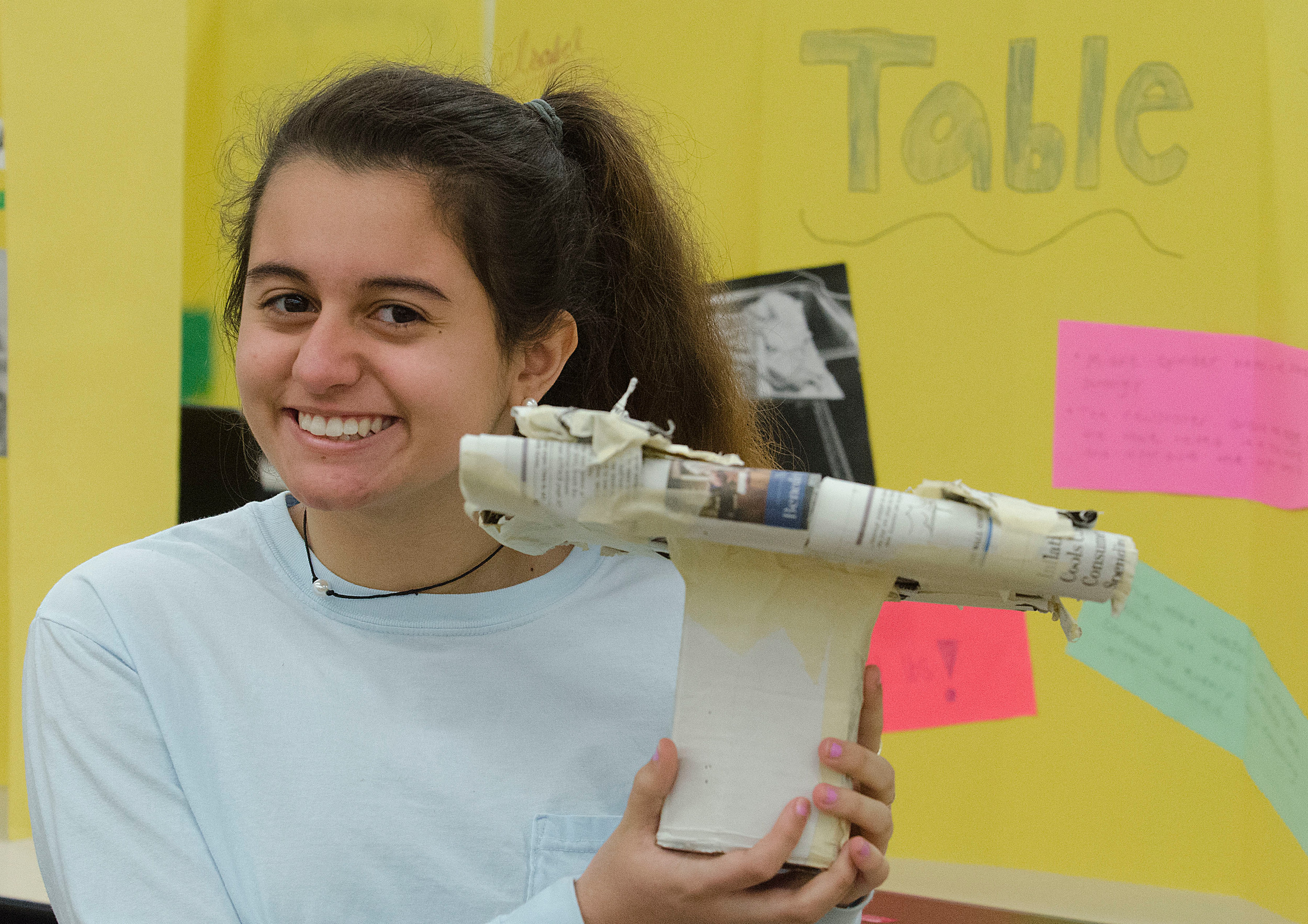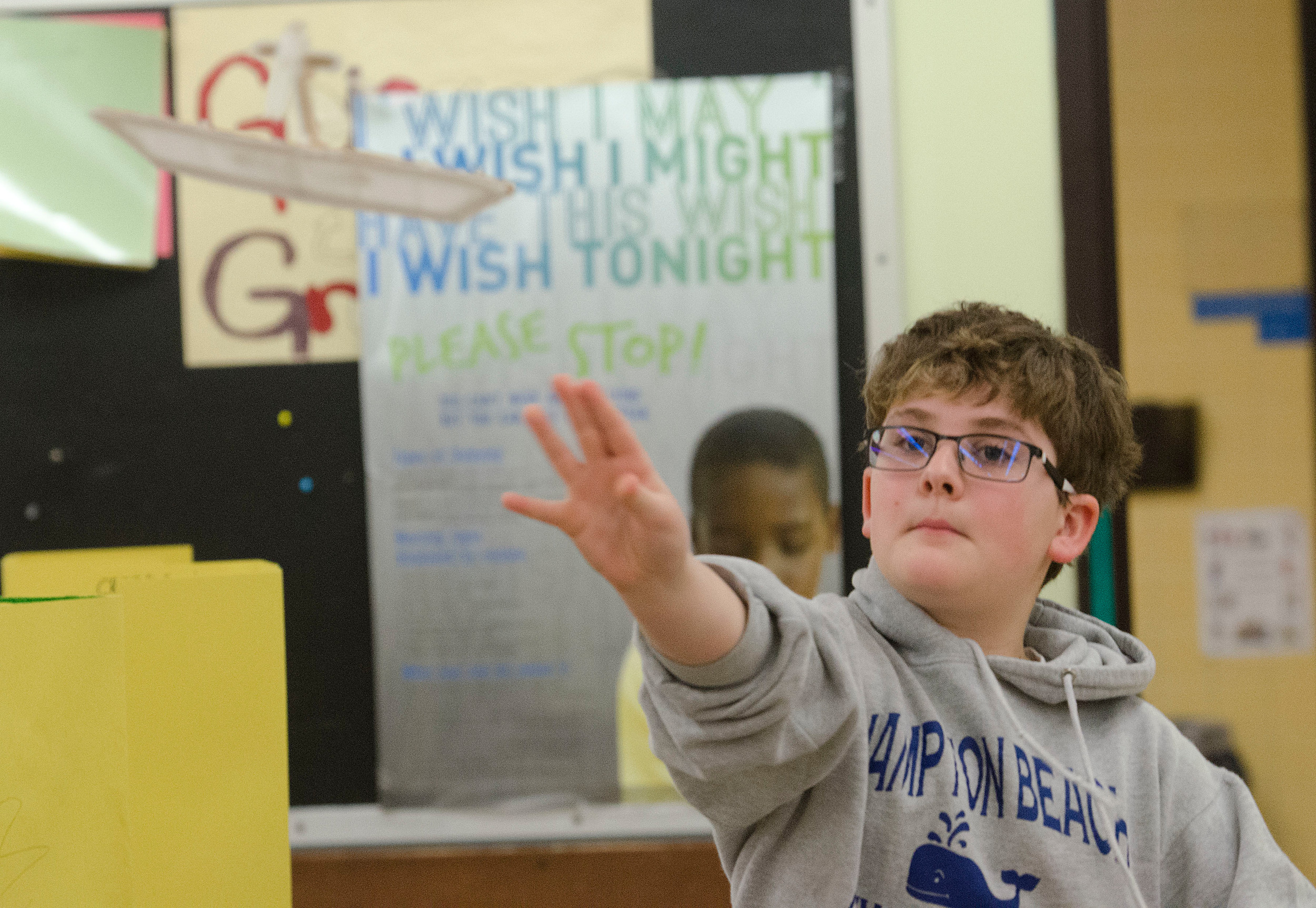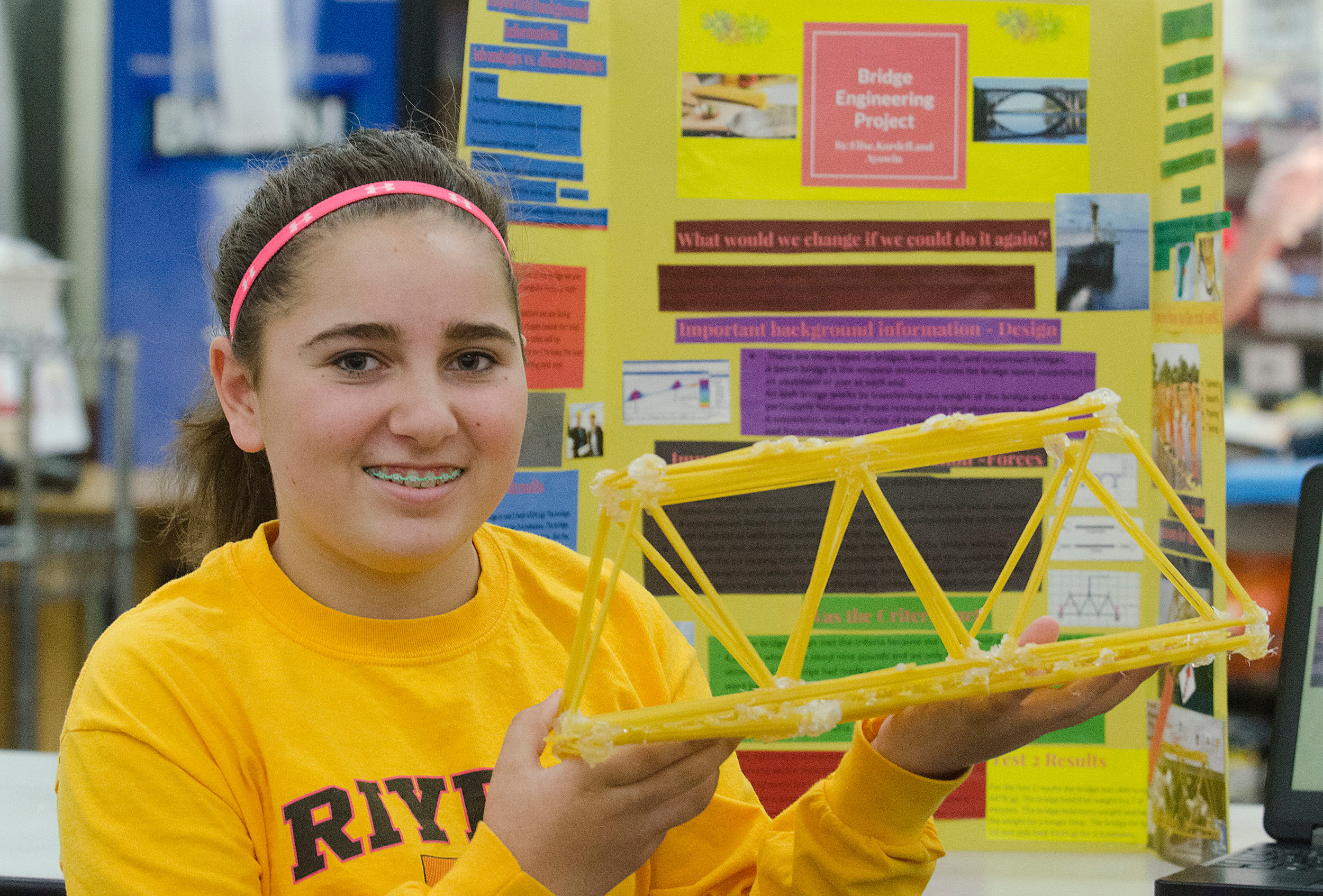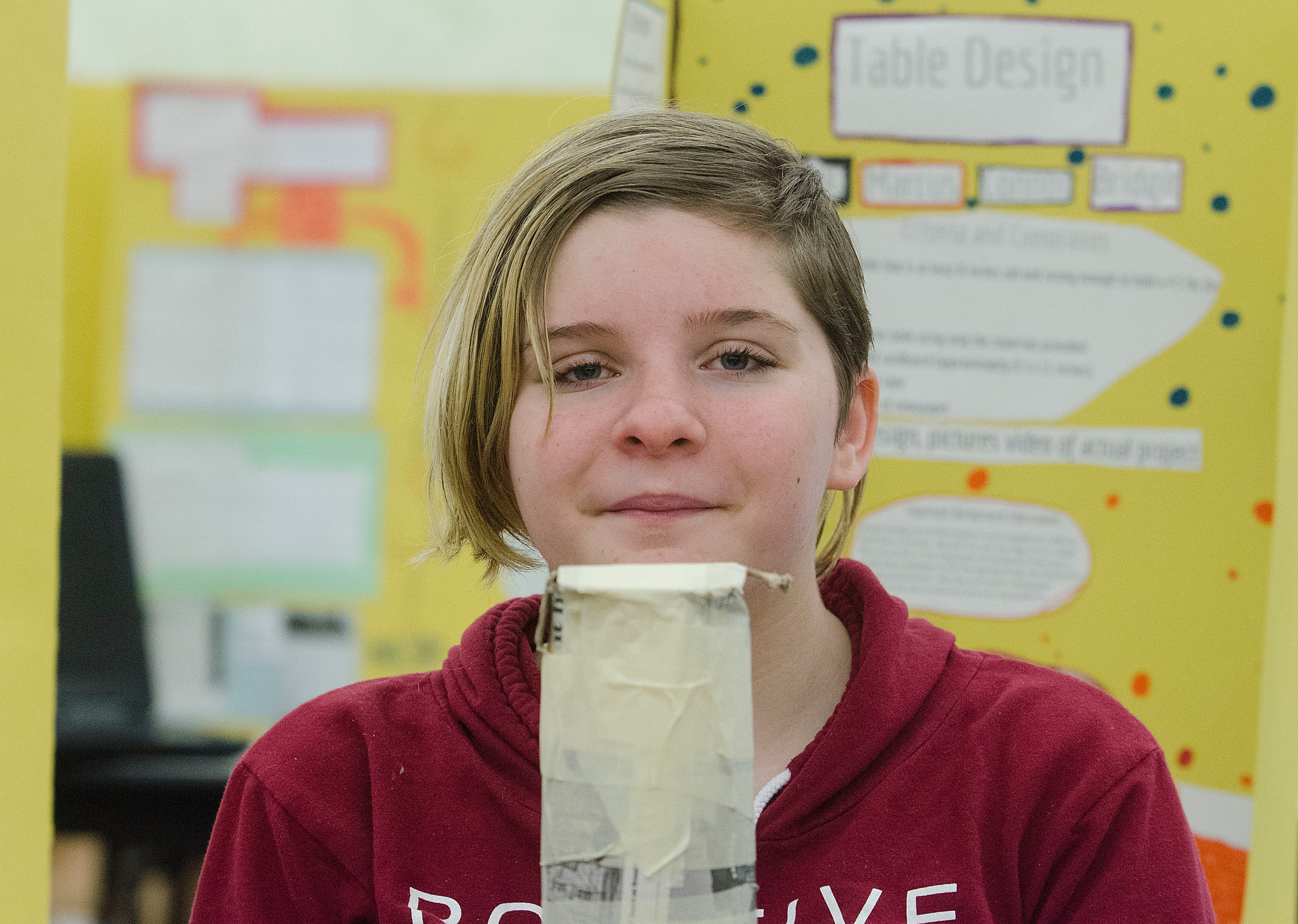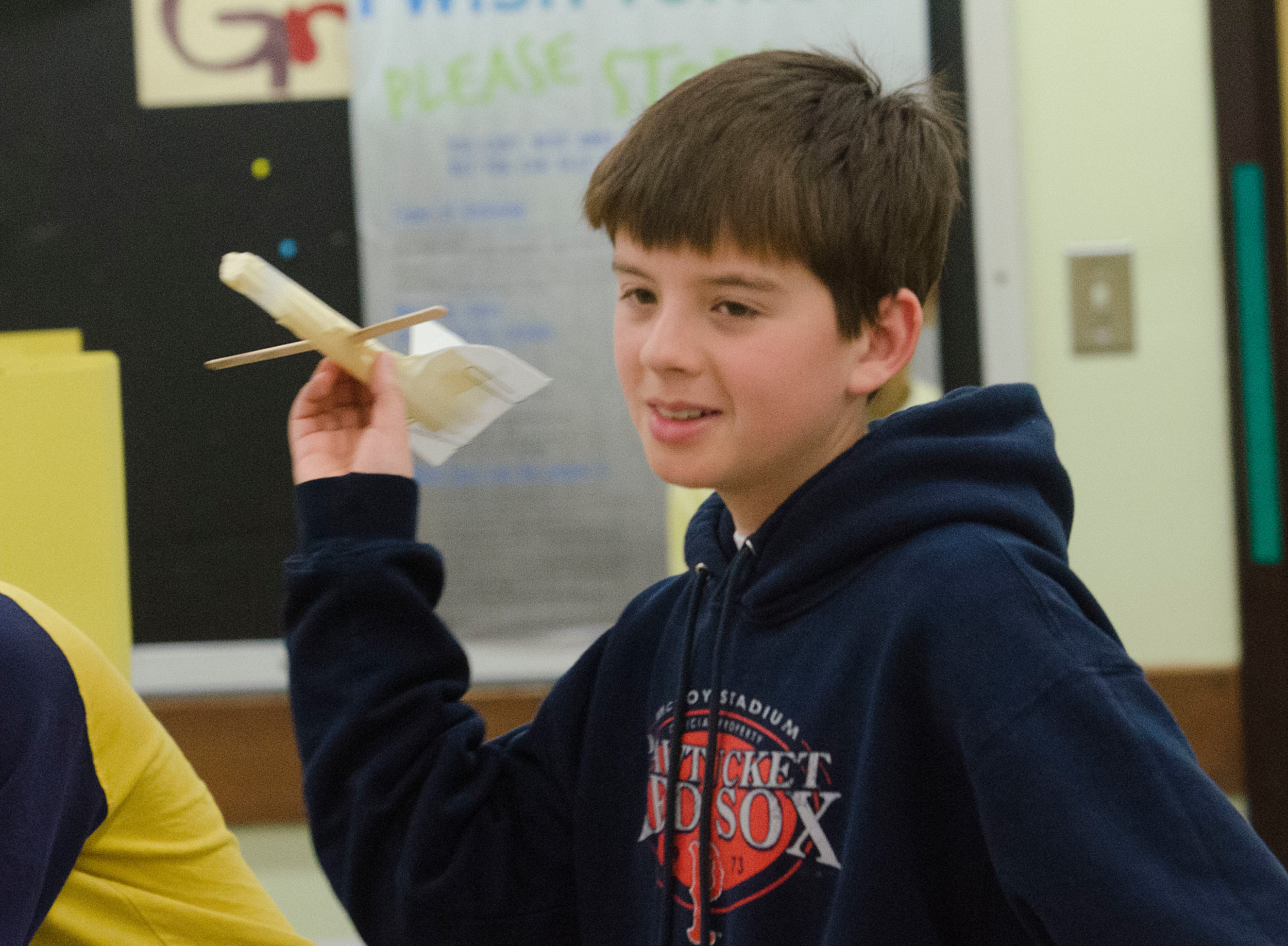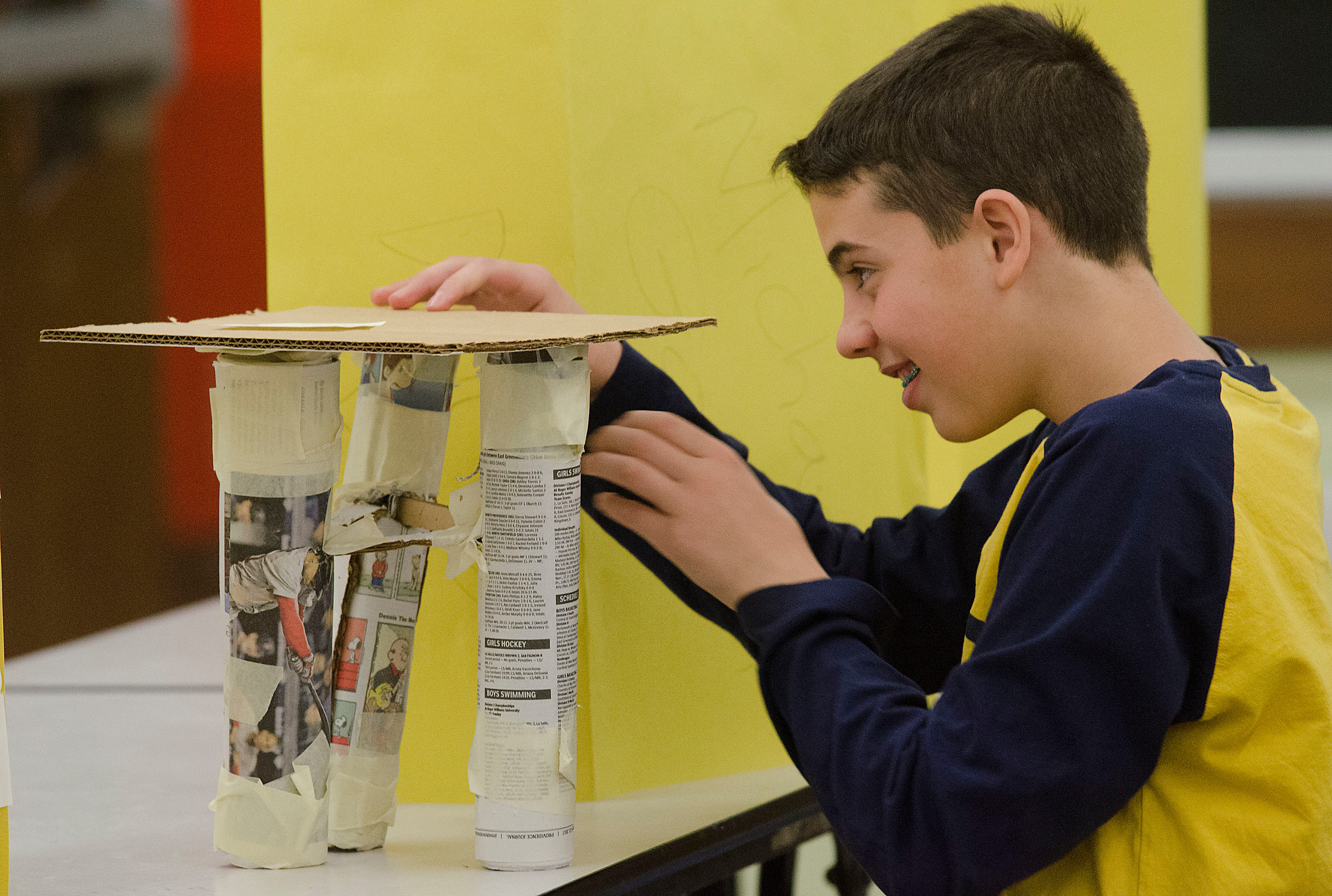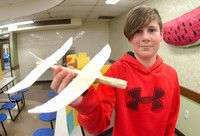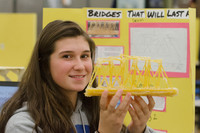- TUESDAY, APRIL 16, 2024
Portsmouth 7th-graders design, build, test and tinker
Middle school students put their engineering caps on for fair
PORTSMOUTH — Ryleigh Hackley and Emma Myers used half a box of spaghetti strands to build a bridge less than 20 inches long, but which supported 11.6 pounds of added weights.
Just think …
This item is available in full to subscribers.
Please log in to continue |
Register to post eventsIf you'd like to post an event to our calendar, you can create a free account by clicking here. Note that free accounts do not have access to our subscriber-only content. |
Day pass subscribers
Are you a day pass subscriber who needs to log in? Click here to continue.
Portsmouth 7th-graders design, build, test and tinker
Middle school students put their engineering caps on for fair

PORTSMOUTH — Ryleigh Hackley and Emma Myers used half a box of spaghetti strands to build a bridge less than 20 inches long, but which supported 11.6 pounds of added weights.
Just think what they could have achieved using manicotti.
Nearly 200 students participated Thursday in Portsmouth Middle School’s Seventh-Grade Engineering Fair, showing off their designs for a bridge, glider, boat or table.
Kim O’Neill spearheaded the engineering fair along with fellow science teacher Melissa Gendreau. She said seventh-graders previously worked only on experiments, and the new focus on engineering is in response to the new Next Generation Science Standards (NGSS) the district must follow.
“It was also a little more collaborative,” Ms. O’Neill said. “They worked with partners, so they also got that understanding about team-building and the connection to the real world in compromising.”
Erin Escher, the district’s K-8 science instructional coach, said the fair also ties into Portsmouth’s STEAM (science, technology, engineering, and mathematics) initiatives because the projects involved all those disciplines.
“The students were given a few different challenges to choose from — bridge-building or making a sturdy structure out of paper products, or trying to get a boat to hold the most pennies while learning about density and buoyancy,” Mr. Escher said. “They went through that engineering and design process where they had constraints and criteria they had to follow. The did the background research and had to ask questions and plan through sketching and creating a blueprint. Then they started testing and went through different iterations just like a real engineer would.”
In some cases, students used their smart phones to create time-lapse videos or stop animation, he said.
Just like any engineer would do, students kept tinkering and making adjustments to improve their projects.
Ryleigh and Emma’s first attempt at a bridge — they decided on a truss design after doing research — held only 5.2 pounds of weight. But adding another layer of spaghetti in the base and reinforcing the sides, it could carry 11.6 pounds.
Can always do better
Willem Witteveen made a glider with wings made from Styrofoam, the body from popsicle sticks and the center from straws. It had a wingspan of 22 centimeters and flew 19.5 feet with a flight time of five seconds, he said.
The flight distance surpassed the criteria of 12 feet, but Willem said he could do better next time. “I would put the weight more toward the center and make the wings a little bit more sturdy,” he said, acknowledging the plane was “a little banged up” from all the test flights.
A glider designed by AJ Amaio and Olivia MacDonald managed to fly 24 feet and hit an “X” at 12 feet away. While some other students made planes that flew up to 45 feet, AJ said he was still proud of the distance his team’s plane managed to clear.
“The first one we designed could barely fly 12 feet, so we went twice that distance,” said AJ, adding that he used “lots of hot glue,” which helped keep the plane intact during the test flights.
Elise Conheeny was surprised that the spaghetti bridge her team built could hold so much weight — nine pounds.
“If we could change anything we would have put more support on the bottom because the bridge was bending because of the weight,” Elise said.
Although Elise wasn’t sure what kind of career she’d like to go into later on — “Maybe a teacher; I have no idea,” she said — she certainly saw the appeal in engineering.
“It was actually a lot of fun to build, and I learned a lot,” she said.
Ms. O’Neill said she could see the students get a thrill out of learning something new and seeing improved results with each adjustment.
“The kids were super engaged; they really enjoyed that actual building piece where they got to start from scratch and try it. Most of them didn’t have a successful first round — it didn’t fly far enough or hold enough weight — but they went back and tweaked their designs,” she said.
“You could definitely see, when they were working, light bulbs going off and kids getting excited. There’s definitely excitement about success.”
Keywords
Portsmouth Middle School, Portsmouth School DepartmentOther items that may interest you

